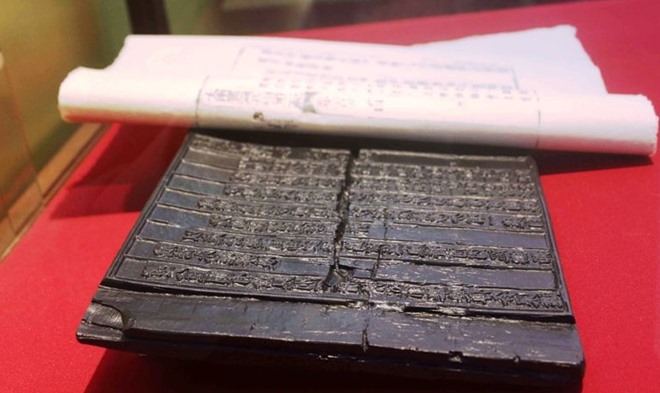 Life & Style
Life & Style

More than 100 ancient documents and objects dated back to the 16th century are on display at the National Archive Centre 4, downtown Đà lạt City, Central Highland province of Lâm Đồng.
 |
| A woodblock at the exhibition. — Photo congan.gialai.gov.vn |
HÀ NỘI — More than 100 ancient documents and objects dated back to the 16th century are on display at the National Archive Centre 4, downtown Đà lạt City, Central Highland province of Lâm Đồng.
Titled "Hoàng Sa Trường Sa của Việt Nam – Những Bằng Chứng Lịch Sử và Pháp Lý" (Việt Nam’s Spratly and Paracel Archipelagoes – Historical and Legal Evidences), the exhibition has nine wooden blocks confirming Việt Nam’s sovereignty over the two archipelagoes.
The blocks were carved during the Nguyễn dynasty (1802-1945) and used to print books. On one wooden block, an excerpt from a book titled Đại Nam Nhất Thống Chí (History of the Unification of Great Việt Nam) is printed with sentences such as “To the east of Quảng Ngãi Province is located Hoành Sa Island – or Trường Sa (Spratlys);" and “Hoàng Sa Island located to the east of Ré Islet. There is a yellow sand area measuring thousands of miles, which is called Vạn Lý Trường Sa, on the island.”
Another block has an excerpt from a book titled Đại Nam Thực Lục (Royal Annals of Great Việt Nam), which says “King Minh Mạng assigned a navy troop led by Phạm Hữu Nhật to go to Hoàng Sa to measure and draw a map of Hoàng Sa Archipelago in 1836."
The wooden printing blocks of the Nguyễn dynasty have been recognised as UNESCO’s World Documentary Heritage.
The blocks are made of a plate of wood with letters carved in classical Chinese and the old Vietnamese script called chữ Nôm. The letters are carved in reverse so that when the image is printed, it is legible.
During the Nguyễn dynasty, the blocks were made to print information publicising social standards, articles on the lives and careers of the aristocracy and historical events. These are the original records of the era and it is for this reason they are considered so valuable.
The centre currently preserves a collection of nearly 35,000 blocks dating from 1697 to 1945, used to print literary and historical works.
The centre is located on No 2, Yết Kiêu Street, Đà Lạt City. — VNS




